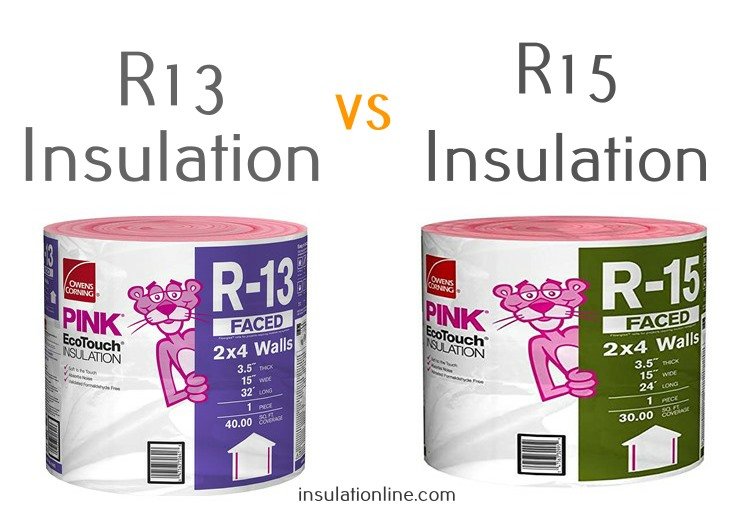Are you tired of high energy bills and cold homes? Choosing the right insulation is key to saving money and staying cozy. R13 vs R15 insulation can be a tough decision, affecting your home’s comfort and energy use.
Bad insulation means lost heat, cold rooms, and higher bills. It’s a waste of money and makes your home uncomfortable. Knowing the difference between R13 and R15 insulation is important for a smart choice.
In this guide, I’ll cover everything about r13 vs r15 insulation. We’ll look at the technical stuff, compare how they perform, and help you make a choice. This will save you money and keep your home warm and comfy.

Understanding R-Value Basics and Heat Loss Prevention
Knowing about R-value is key for keeping your home energy-efficient. R-value shows how well insulation stops heat from moving. This affects your home’s comfort and your energy bills. Whether you’re looking at r13 r15 insulation or comparing it to r15, understanding the basics is important.
Read also: Is Blown-In Mineral Wool Insulation Effective?
What R-Value Means in Insulation
R-value is a number that shows how well insulation keeps heat out. The higher the R-value, the better it stops heat. So, R15 insulation is better at keeping heat out than R13.
- R-value ranges from 1 to 60
- Higher numbers mean better insulation
- Thickness and material type affect R-value
How R-Values Impact Energy Efficiency
Different R-values affect how much energy your home uses. R15 insulation is usually better than R13, which means lower energy bills. The right insulation keeps your home’s temperature steady and saves energy.
Heat Transfer and Insulation Performance
Insulation slows down heat movement between inside and outside. R15 insulation is better at this than R13. This means better temperature control and lower energy costs for you.
Learning about R-value helps you choose better insulation for your home. This improves your home’s energy efficiency.
Cost Comparison: R13 vs R15 Insulation Investment
When looking at r13 vs r15 insulation, the cost is key. Homeowners and contractors need to consider this. The price difference can affect your budget a lot.
Let’s look at the money side of r13 vs r15 insulation:
- Material Costs: R13 insulation costs about $35.92 for a 2×4 wall. R15 is around $127.29.
- Price Difference: You’ll pay about $91.37 more for R15.
- Long-term Energy Savings: R15’s better thermal performance can save money over time.
Think about your project needs. R15’s extra cost might seem high at first. But, it could save you money on heating and cooling in the long run.
When deciding on insulation, remember these points:
- Climate zone needs
- Building type and use
- Energy cost savings
- Local building codes
Professional installers can figure out the return on investment for you. R15 might cost more upfront. But, it can make your home more comfortable and save on energy bills.
Installation Methods and Requirements for Both Types
Installing insulation right is key for better energy use and comfort at home. Whether you pick R13 or R15 insulation, how you install it matters a lot. It affects how well your building keeps heat in or out.
Knowing what you need for r15 insulation thickness and how to install it is important. Both pros and DIY folks need to focus on a few key things during installation.
Professional Installation Insights
Experts have strict rules for insulation work. They often suggest:
- Measuring wall cavities precisely before cutting insulation
- Checking r15 insulation thickness compatibility with specific wall depths
- Using proper protective equipment during installation
- Ensuring complete coverage without compression
DIY Installation Guidelines
If you’re doing it yourself, here’s what to do:
- Measure wall cavities accurately
- Select the correct r15 insulation thickness for your space
- Wear protective gear like gloves and safety glasses
- Cut insulation carefully to fit wall spaces
- Install without gaps or compression
Common Installation Mistakes to Avoid
DIY folks often make big mistakes. Here are some to watch out for:
- Leaving gaps between insulation sections
- Compressing insulation, which reduces its effectiveness
- Ignoring proper moisture barrier installation
- Failing to seal air leaks before insulating
By knowing these tips and avoiding common mistakes, you can make sure your insulation works well. This means your home will be more energy-efficient and comfortable.
Read also: Does Insulation Help With Sound?
r13 vs r15 insulation: A Complete Comparison

Choosing between r13 and r15 insulation is a big decision for homeowners. It can greatly affect your home’s energy use. These two types might look similar, but they have key differences that affect your home’s warmth.
R13 and R15 insulation come in different materials, each with its own benefits. Let’s look at the main differences:
- Thermal Performance: R15 offers better heat resistance than R13
- Thickness: R15 is thicker, providing better insulation
- Material Options: Both are available in fiberglass, spray foam, and mineral wool
| Characteristic | R13 Insulation | R15 Insulation |
|---|---|---|
| Typical Thickness | 3.5 inches | 3.8-4 inches |
| Best Used In | Walls, mild climates | Walls, cooler regions |
| Recommended For | Standard residential walls | Enhanced energy efficiency |
When deciding between r13 and r15 insulation, consider your needs. R15 offers better insulation, which can lead to lower energy bills and better comfort. The slight increase in R-value might be worth it, mainly in very cold or hot areas.
I suggest talking to a local insulation expert. They can check your home and help you choose wisely.
Applications in Different Climate Zones
Choosing the right insulation for your home depends on your local climate. R15 insulation has different uses in various temperature regions. It’s important to know how it works in different environments.
The use of R15 insulation changes based on where you live. Energy Star suggests specific insulation plans to improve home efficiency and comfort.
Warm Climate Considerations
In hot places like Arizona or Florida, R15 insulation stops heat from entering. It helps lower cooling costs. Keeping the inside cool is the main goal, and reflective properties are key.
- Blocks solar radiation effectively
- Reduces air conditioning expenses
- Provides consistent indoor temperature
Cold Climate Requirements
In cold areas like Minnesota or Alaska, R15 insulation is vital. It keeps warmth inside during harsh winters. Proper installation can cut down heating costs.
- Minimizes heat escape
- Creates thermal barrier against cold
- Improves overall home energy efficiency
Mixed Climate Solutions
Places with big temperature changes need flexible insulation. R15 insulation is a good choice for areas with hot summers and cold winters. It helps regulate temperature all year.
How well R15 insulation works depends on where you live. Getting advice from local energy experts can help you choose the best insulation for your area.
Thickness and Density Differences
Exploring r15 insulation thickness reveals interesting differences. Standard wall cavities can hold both R13 and R15 insulation batts. They are both 3-½” thick, which might seem odd at first.
The main difference is in the insulation’s density. R15 insulation has a higher R-value due to material changes. These changes improve thermal performance without needing more wall space.
- Standard thickness: 3-½” for both R13 and R15
- Density variations determine R-value performance
- No structural changes needed for r15 insulation thickness upgrade
Different insulation materials, like fiberglass and mineral wool, tackle this challenge in their own ways. Manufacturers design these products to boost thermal resistance within standard building limits.
It’s wise to talk to a professional insulation contractor for your project. They can guide you on the right r15 insulation thickness for your climate and building needs.
Building Code Requirements and Compliance
Understanding building code requirements for insulation can be tricky. This is true when deciding between R13 and R15 for ceilings, attics, and basements. Local rules are key to picking the right insulation for your project.
Different parts of the United States have their own building code rules. Knowing these differences is essential. It helps ensure your home or business meets energy standards.
Regional Code Variations
Insulation needs vary by location. Climate zones affect building codes, with colder areas needing more insulation:
- Northern states require higher insulation levels
- Southern regions have more relaxed requirements
- Coastal areas may have special wind and moisture considerations
Energy Star Standards
Energy Star offers detailed guidelines for insulation. These standards help choose the best insulation for energy savings.
| Climate Zone | Recommended R-Value | Typical Application |
|---|---|---|
| Zone 1-2 (Warm) | R13 | Walls, Attics |
| Zone 3-4 (Moderate) | R15 | Walls, Basements |
| Zone 5-8 (Cold) | R15-R21 | Ceilings, Walls |
Commercial vs Residential Requirements
Commercial and residential buildings have different insulation rules. Residential buildings focus on comfort and energy efficiency. Commercial buildings need to meet stricter safety and performance standards.
- Residential codes prioritize homeowner comfort
- Commercial regulations emphasize structural integrity
- Both require adherence to local building codes
Always check with local building authorities and experts. This ensures you follow the latest insulation rules.
Performance in Different Building Areas

Choosing the right insulation for your home depends on the area. Ceilings, attics, and basements have different needs. R13 and R15 insulation have their own benefits for each space.
In attics, keeping temperatures stable is key. R15 insulation does a better job than R13 in areas with big temperature swings. Basements need strong insulation to fight moisture and temperature changes from the ground. R15 is often better for these tough spots.
- Ceilings: R13 works well in standard residential spaces
- Attics: R15 recommended for enhanced thermal barrier
- Basements: Higher R-value is key for moisture control
Performance depends on several factors:
- Climate zone specifics
- Building structure
- Existing moisture conditions
- Air circulation patterns
Before making a choice, carefully consider your building area. While R15 might be a bit better, how it’s installed and local rules are also important. They help decide the best insulation for your ceilings, attics, and basements.
Material Types and Manufacturing Processes
Choosing insulation for your home means knowing about different materials and how they’re made. R13 and R15 insulation come in various types. Each has its own strengths and weaknesses for different uses.
The insulation world offers many choices to fit your building needs. Makers use advanced methods to make top-notch r13 r15 insulation. This boosts energy efficiency.
Fiberglass Options
Fiberglass is the top pick for r13 and r15 insulation. It’s made by melting glass into thin fibers. This material is good at keeping heat out and is affordable.
The making process is:
- Melting glass at high temperatures
- Spinning the molten glass into thin fibers
- Binding fibers with special resins
- Forming batts or loose-fill insulation
Mineral Wool Variations
Mineral wool, like rock wool and slag wool, is another choice. It’s made by melting rock or slag waste into dense, fire-resistant fibers. This makes it a solid option for r13 r15 insulation.
Other Material Choices
There are more insulation materials out there:
- Cellulose: Made from recycled paper products
- Spray foam: Provides exceptional air sealing
- Polyisocyanurate (polyiso): Offers high R-value per inch
Each material has its own perks for r13 and r15 insulation. Homeowners can pick the best one for their needs and budget.
Conclusion
Exploring r13 vs r15 insulation shows that the right choice depends on many factors. Each home and climate has its own needs. These include thermal performance, energy efficiency, and budget.
Our detailed review found that r13 and r15 insulation have small but important differences. R15 often offers better thermal resistance. This can lead to more energy savings and comfort in your home.
For areas with big temperature changes, choosing R15 can be a smart move. It can greatly improve your home’s energy use.
Before making a decision, look at your local building codes and climate. Also, check your home’s current insulation. While R15 might be better, R13 is great for some budgets or climates.
The most critical thing is to install it right. Make sure your home has a consistent thermal barrier.
Understanding your insulation needs is key to saving energy and comfort in the long run. Whether you pick R13 or R15, aim for a cozy, energy-smart home all year.


